
If you are in a mood to make the most out of your desktop; you need to install some of the best indicator applets for Ubuntu. For beginners, we will also recommend installing indicator applets as one of the first things to do after installing Ubuntu.
What is an indicator applet?
When you have indicator applets (IA) installed, you may observe to have more accessibility. Furthermore, 3rd Party software developers can make things easier by offering an indicator applet for their application. Additionally, indicator applets act like widgets on your iPhone or Android.
Basically, the indicator applet provides an easier and quicker way to access some main functionalities of applications. You can get it right from the panel.

In this article, I will list out some of the best indicator applets for Ubuntu.
1. Vitals: An Applet to Know about your System Resources
Vitals is a popular GNOME Extension, that will display important system information like memory usage, CPU Temperature etc.
While for some systems, voltage and fan data won’t be present. So in such a system, you will see a “No Data” entry corresponding to such fields.
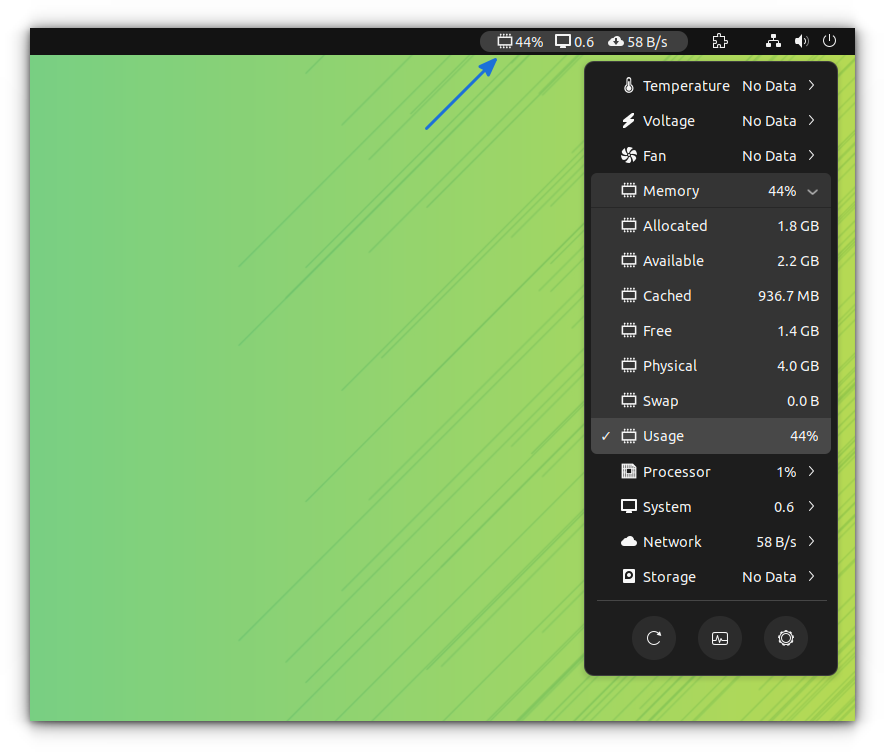
You can also view information like the current internet speed, right within the panel, by default.
On Debian or Ubuntu-based systems, first install the necessary dependencies, including the GNOME Shell Extension Manager app, using the command below:
sudo apt install gnome-shell-extension-manager gir1.2-gtop-2.0 lm-sensorsNow, you can install the extension from either the extension manager or using its web page on GNOME Extensions.
2. System Load: Indicator Applet To Monitor System
With Ubuntu, you can check similar system stats necessary using the System Load Indicator applet. You can observe some of the most important system statistics when you click on the indicator icon. It generally includes RAM usage, CPU utilization, I/O wait, cache memory, disk access speed, and the internet speed as well. However, you can keep the ones you like or are relevant to your needs by changing your preferences.
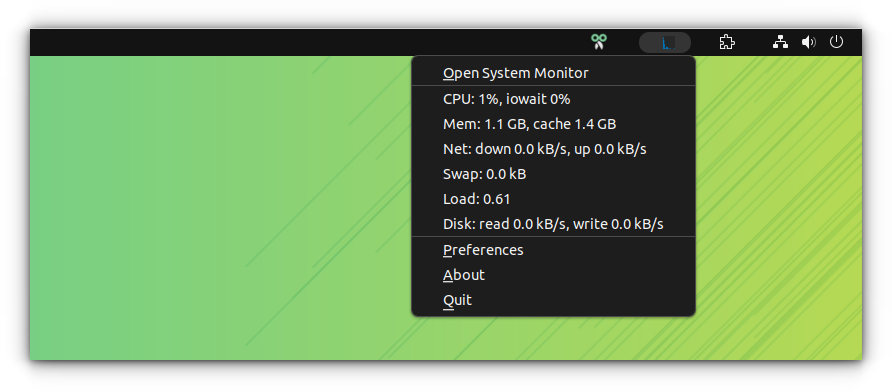
In addition, if you need to check out the complete details of the processes running, resources utilized and disk space, you can simply do that by opening the system monitor through this indicator applet.
To install the system load indicator applet, you need to enter the following command in the terminal:
sudo apt-get install indicator-multiloadYou may have to restart your system, once installed, to make the indicator start.
3. CPU-Freq
CPUFreq is a lightweight tool, that helps manage your CPU’s performance and power usage. It uses the Linux kernel to collect information and manage power governors.
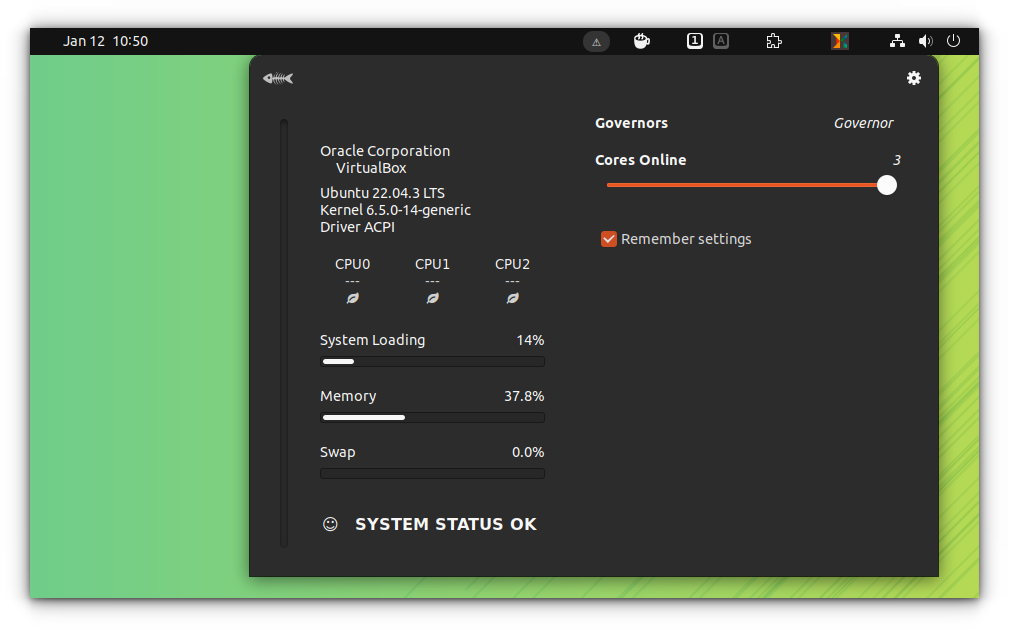
According to the developer of this project, you may have to uninstall the IRQBalance package from your system (Debian flavours, where it is installed by default) to make the extension work smooth.
sudo apt remove irqbalanceNow, reboot your system. You can install the CPUFreq extension now, to make use of it.
It has plenty of settings and tweaks, that you can utilize, especially to increase the battery life of your laptop.
4. Open Weather: A Detailed Weather Applet for your Panel
This extension is a must-have, if you are interested in Climate related facts. GNOME has a built-in weather notifier app, but it has some limitations. If you are living in a city, that does not provide the nearest available weather station, then, you won’t get accurate weather data.
While, OpenWeather gives you a wide range of cities and also a very visually appealing look.
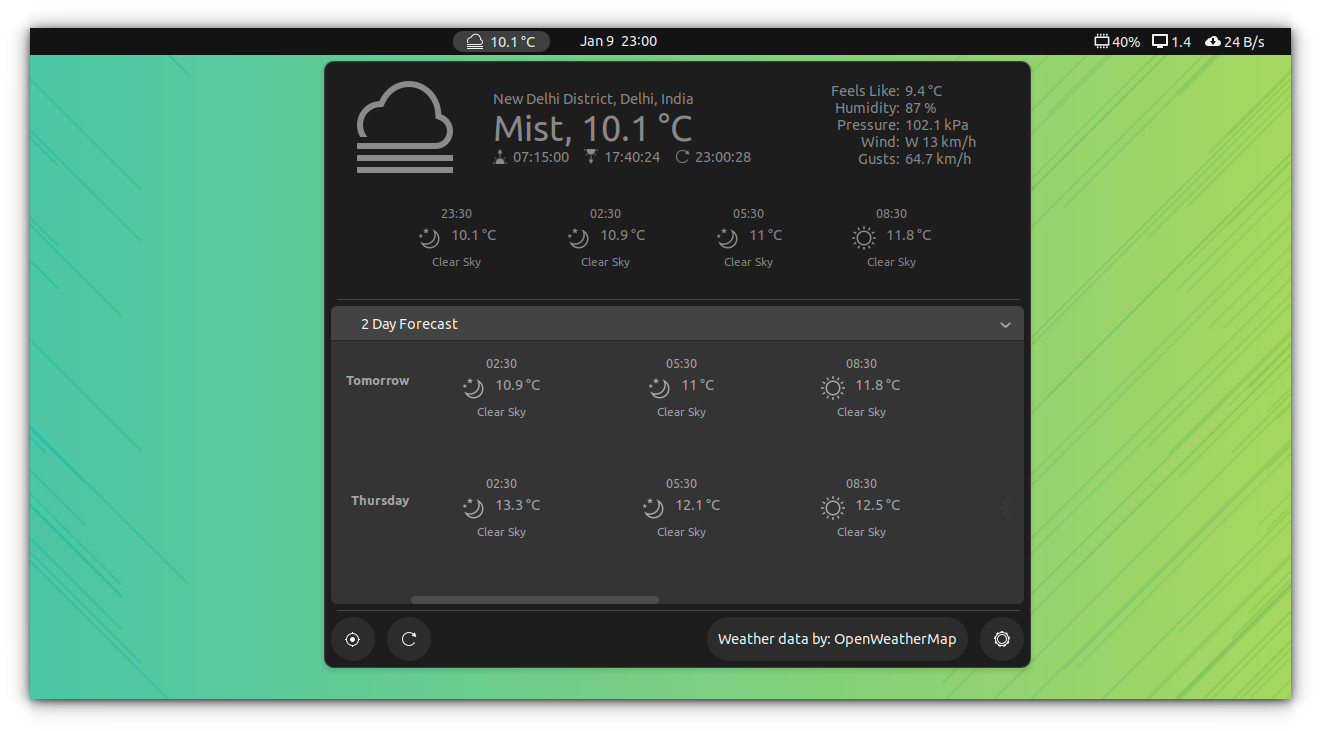
You can add multiple cities, with a lot of information like, temperature, wind speed, etc. You can install it from the Extension manager app, or go to its installation page on the GNOME Extensions website.
5. CopyQ: Copy Quickly To Your Clipboard
CopyQ is a fantastic clipboard manager. There might arise a situation when you copy a text you need, but accidentally lost it by overwriting it with another text. In such cases, CopyQ could come to the rescue by keeping the history of what you copied to your clipboard.
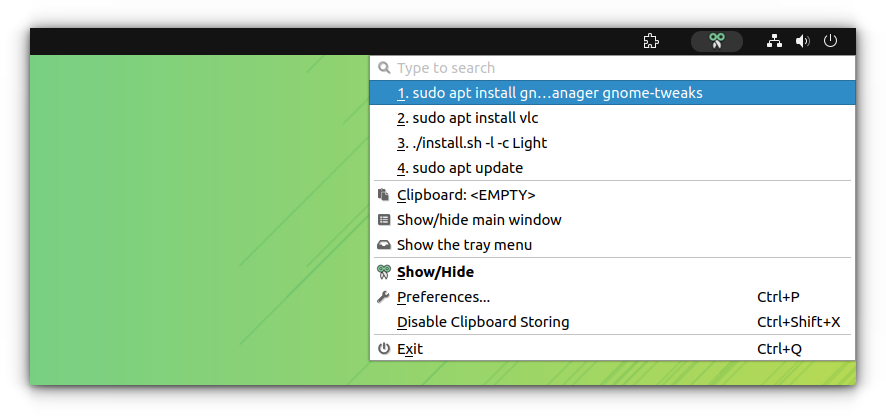
With CopyQ indicator applet installed, you can easily know what’s currently on your clipboard and what existed before. You also get the ability to delete the clipboard items or edit them for future use. In addition, you can also manually enter something to the clipboard which you want to access later with the help of the indicator applet.
You get plenty of options to adjust according to your preferences, starting from the way clipboard history is managed to the appearance settings.
You need to type in the following commands in the terminal to install CopyQ applet indicator:
sudo apt install copyq6. Caffeine Indicator: Don’t Let Your Screen Sleep

The Caffeine Indicator is a useful tool which lets you prevent the screen from turning off. This indicator usually helps when you are watching a movie or if you are away for a while but still want the screen to be active. In other words, the creators of this indicator prefer to describe it as an applet to manually control the desktop’s idle state.
There is another way on Ubuntu, where you can turn off the screen lock altogether, which will be good when you are using a desktop PC.
Caffeine is available as a GNOME Shell extension.
7. Flameshot: Take Screenshots and Annotate them Easily
Taking screenshots has improved a lot in Linux systems recently. GNOME offers the cool GNOME-Screenshot tool, while KDE Plasma offers the comprehensive Spectacle.

Flameshot is another popular tool, that works best under X11. This is a bit more productive screenshot tool, since it offers an annotation feature, right on screen, during taking the screenshot.
More interestingly, you can just copy the annotated screenshot, and use them somewhere else, without saving it on your system. This will be good, especially if you are planning to send annotated screenshot over some messaging platform, live chats etc.
Flameshot is available in the Ubuntu repositories, so you can install it using:
sudo apt install flameshotIt is a bit old version. You can check their official GitHub repo for the latest version.
8. Media Control: Manage your Music Playback
Media Control is a GNOME Shell extension, that provides essential audio control and details regarding the current audio being played on your system.

Most of the media players offer this background music playback these days. Even Spotify recently allowed Linux users to play music even after its window is closed. So, this extension, adds a tray item, by default to the center of the panel, which you can change the position later.
You can play, pause, shuffle, etc. using the panel menu. More importantly, it provides mouse actions, like clicks, hover, etc. over the panel entry for customizable actions.
To install, use the GNOME Shell extension manager, or use the link below.
9. Lock Keys: Key lock Indicator
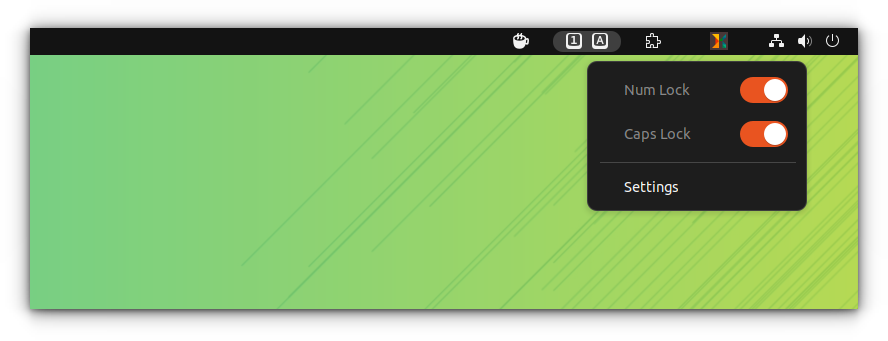
You may already have physical LED indicators attached to your system (or keyboard). But, are they convenient enough?
Unless you are an expert, every time you write something, you need to take a look at the indicator lights, which might distract you for a second. So, in that case, the Lock Keys indicator applet would be more efficient.
The Lock Keys indicator notifies you of a key lock right on your desktop in real-time without any visible delay. Furthermore, when you click on the indicator, you can get to know what key locks are active and what are not.
Install this extension to your system from Extension manager.
10. Extension List: An easy way to manage the installed extensions
It is critical to know what GNOME shell extensions are installed on your system. Occasionally, you may want to toggle on/off a particular extension. Or, you may need to access the settings of a particular extension.
The usual way is to go to the GNOME Extension app, and manage as you needed. To make it more convenient, you can use another GNOME Extension, called Extensions List. What it does is, add a small indicator to the GNOME Top Panel. From here, you can list all the installed GNOME Extensions on your system.
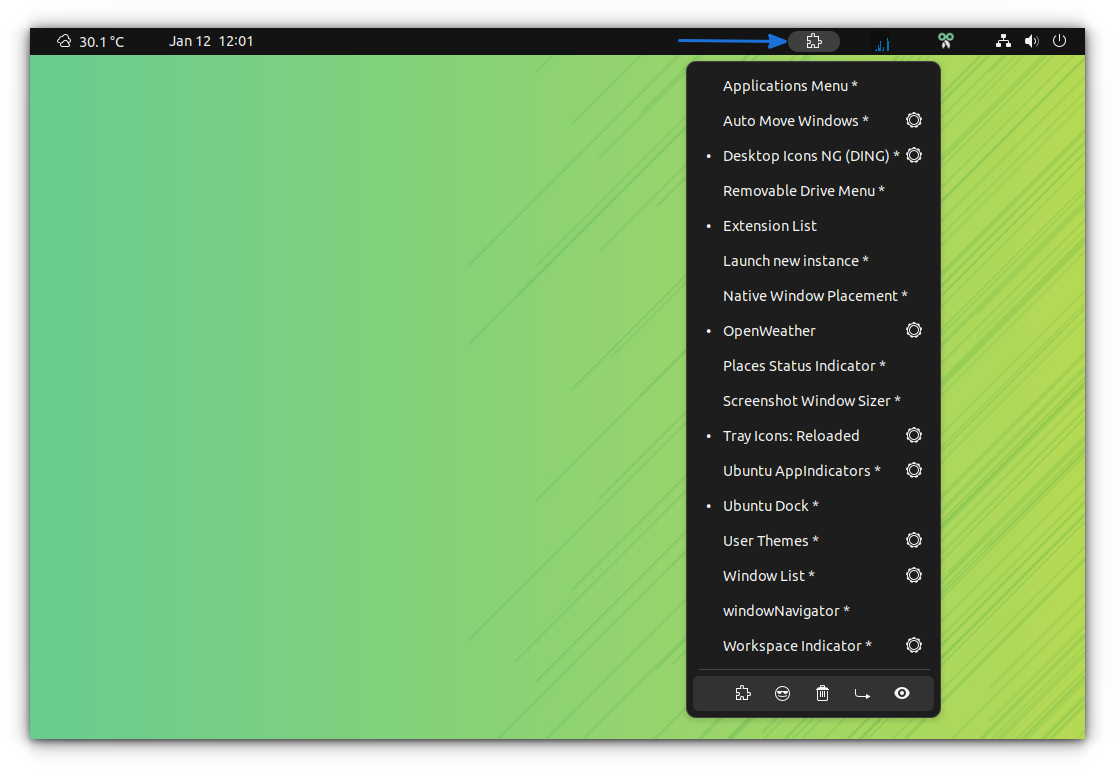
From this view, you can enable/disable a particular extension by clicking on it. It neatly indicates what is currently active. Make use of the settings gear to manage extensions, that has a separate settings dialog box.
11. Place Status Indicator: Open Directory from Panel
Place status indicator is a small GNOME shell extension, that will place a button, from which you can access the directories of the /home/$USER/ folder. It is handy, when you want to open folders such as Downloads, Pictures, etc., without first opening the File Manager App, thus saving a few clicks.
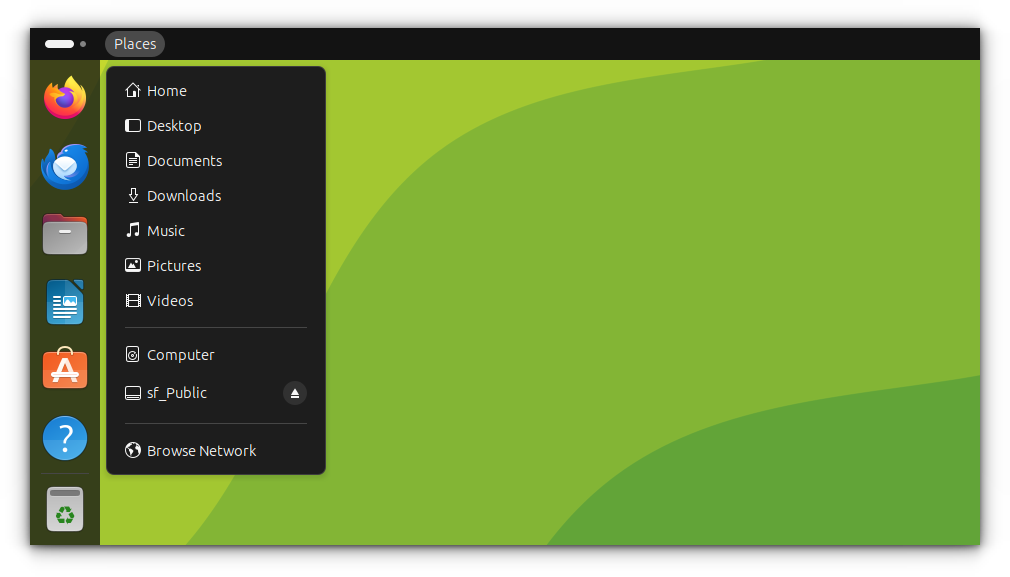
As illustrated by the above screenshot, you can also access mounted drives and network drives like G Drive from here.
12. Systemd Manager: Enable or Disable Systemd Services
Enabling and Disabling systemd services is considered a bit tricky for beginners. But this extension will make it a bit easier for some people.
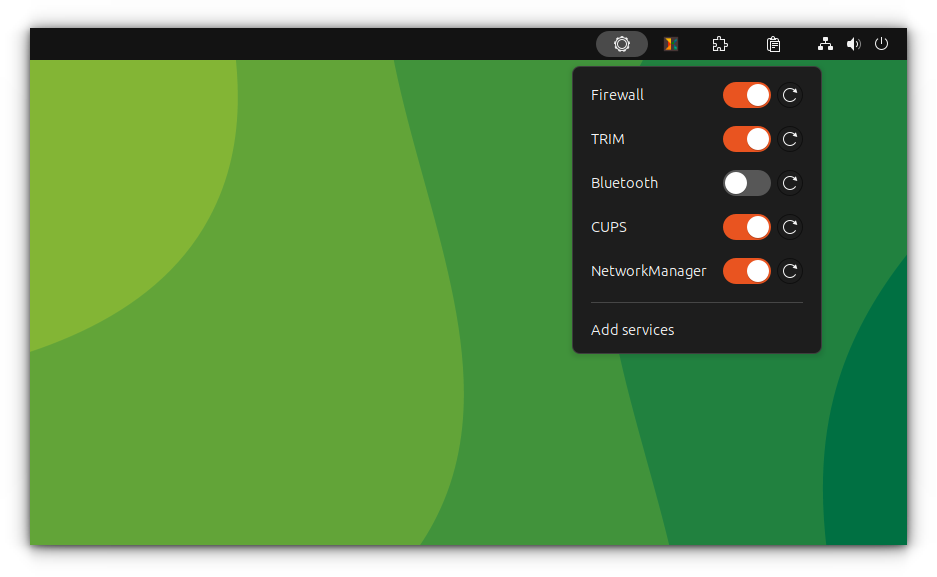
While you open it for the first time from the panel, it will only show the “Add Services” button. Click on it to add the services that you want to toggle on or off easily from the top panel. This can be those that are frequently changed.
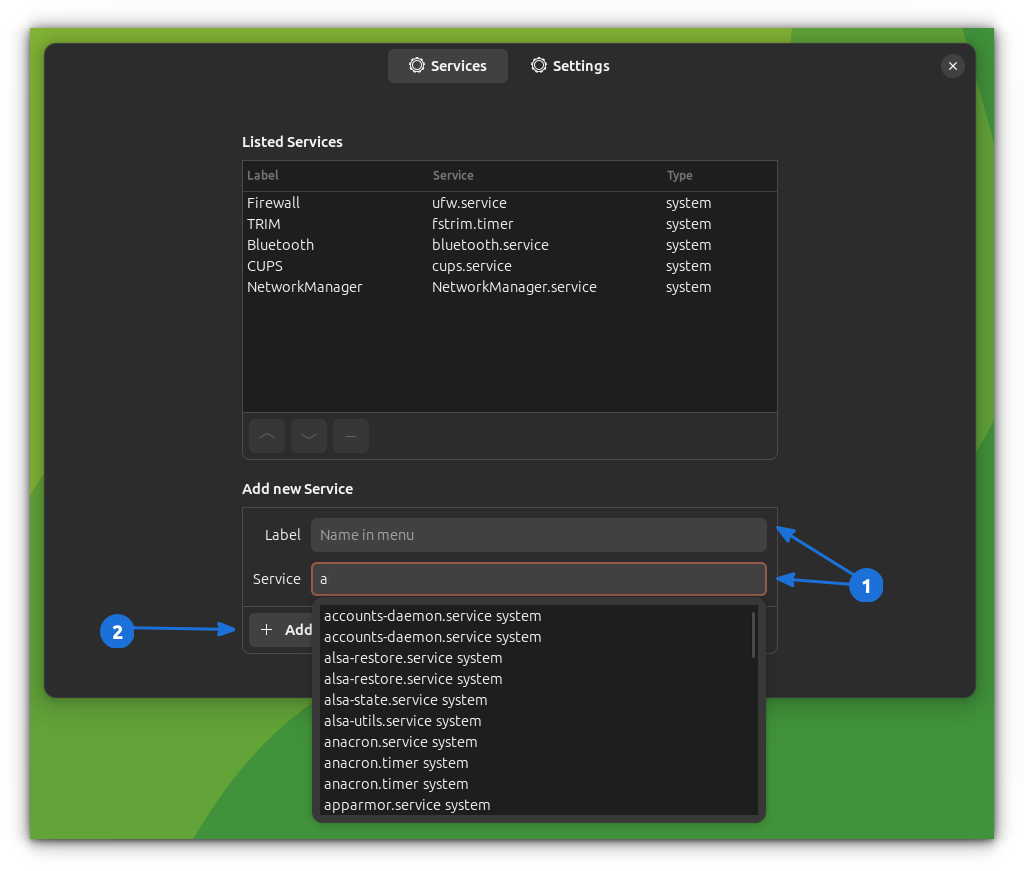
When you start typing something in the “Service” field, it will start suggesting services as you type. Select a service, give it a name, and then click Add. That’s it. From now, you can toggle them from the top panel.
13. Astra Monitor: A Comprehensive Indicator
Astra Monitor is anew system monitor indicator for GNOME Shell. It is not a stable release as of now, but seems to work pretty well.
This gives a comprehensive monitoring of your system details, enhances with diagrams and process tables.
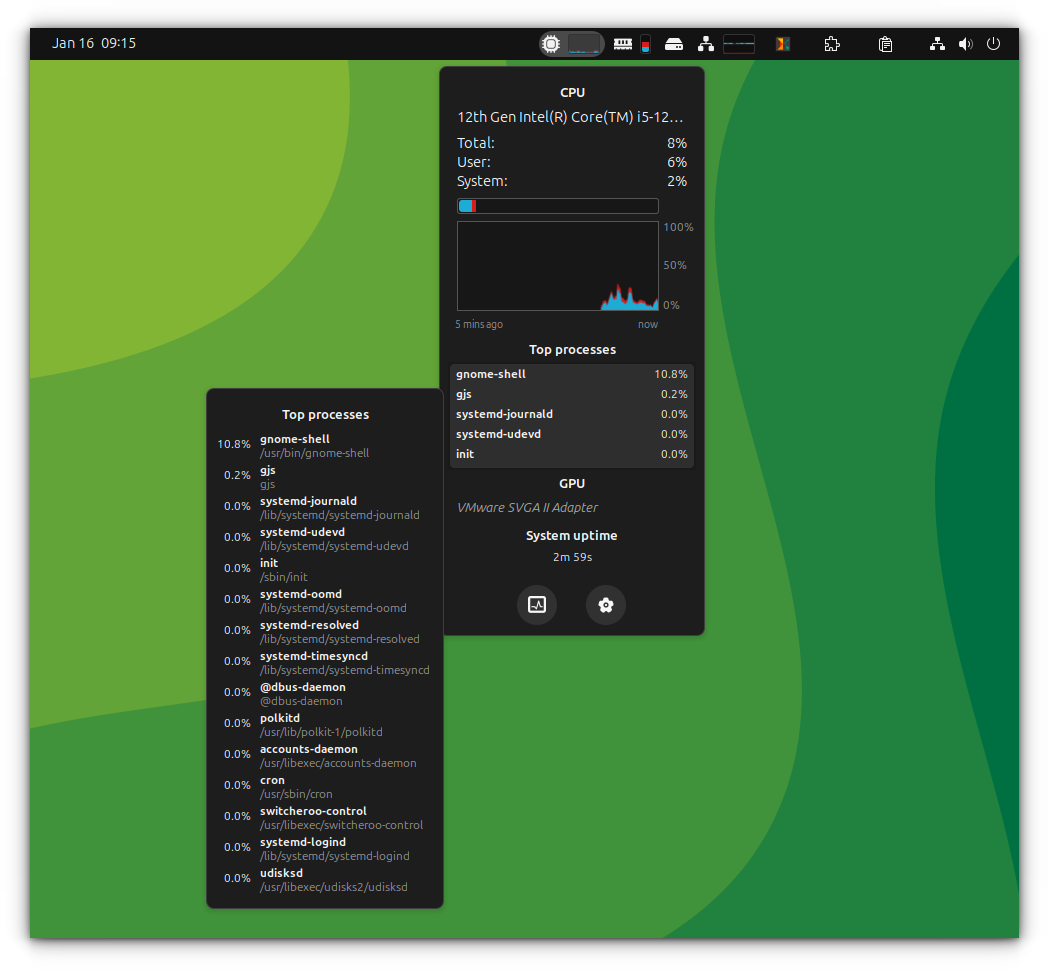
It provides real-time updates with a fully customizable interface. Since resources are only queried when needed, it has also an optimized performance.
You can install this extension only if you are running GNOME 45. That means, Ubuntu 23.10, Fedora 39 etc. can run this extension.
Wrapping Up
So, finally, now you know about the best indicator applets available for Ubuntu. According to what you need and what you perform on your system, we would definitely recommend installing the suitable indicator applets to make your desktop more productive.
Did we miss any of your favorite indicator applets that you already use in Ubuntu? Is there an interesting indicator applet you think we should know about?
Let us know your thoughts in the comments section below.
Suggested Read 📖
Here are some of the best GNOME Shell Extensions, that you can use.
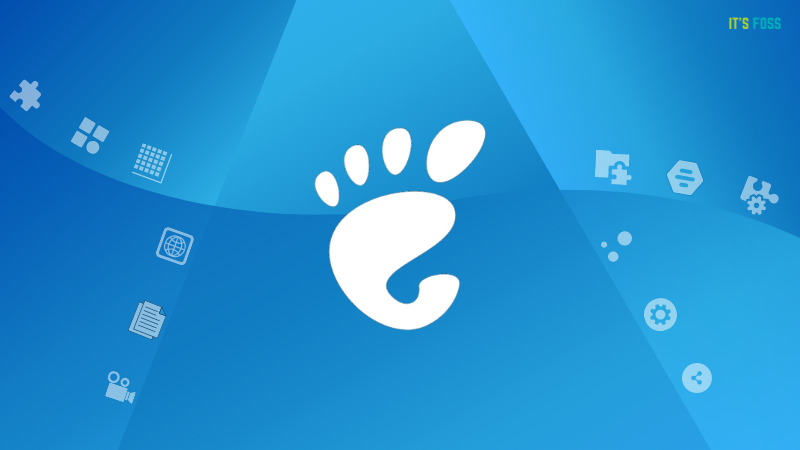
Take a look at this comprehensive guide on using GNOME Extensions.
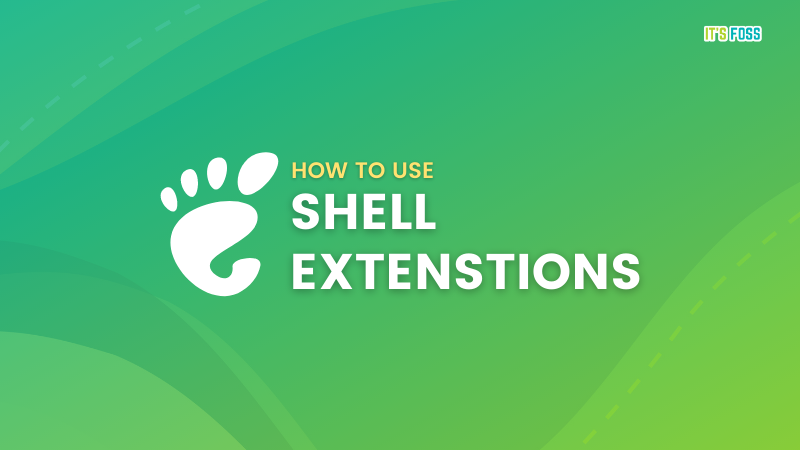
It's FOSS turns 13! 13 years of helping people use Linux ❤️
And we need your help to go on for 13 more years. Support us with a Plus membership and enjoy an ad-free reading experience and get a Linux eBook for free.
To celebrate 13 years of It's FOSS, we have a lifetime membership option with reduced pricing of just $76. This is valid until 25th June only.
If you ever wanted to appreciate our work with Plus membership but didn't like the recurring subscription, this is your chance 😃


